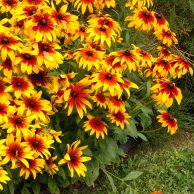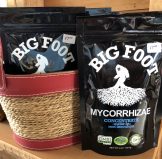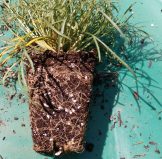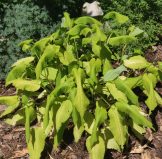 Fall is among the best times to plant perennials. While we may begin to wilt from late summer heat, many plants rise to the occasion and burst into bloom! As days begin to grow shorter, perennials spend the next few months developing root systems or taproots that delve well below the hot, dry surface soil. Pollinators depend on finding pollen and nectar sources through the entire summer, so it’s important to include late-summer and autumn bloomers in your garden.
Fall is among the best times to plant perennials. While we may begin to wilt from late summer heat, many plants rise to the occasion and burst into bloom! As days begin to grow shorter, perennials spend the next few months developing root systems or taproots that delve well below the hot, dry surface soil. Pollinators depend on finding pollen and nectar sources through the entire summer, so it’s important to include late-summer and autumn bloomers in your garden.
Here are a few suggestions for successful planting.
A FEW SUGGESTIONS FOR SUCCESSFUL PLANTING IN FALL
 Use a mycorrhizal inoculant to help plant roots quickly form a symbiotic relationship with beneficial fungal networks that bring water and nutrients to the plant in exchange for sugars generated by the plant’s photosynthesizing.
Use a mycorrhizal inoculant to help plant roots quickly form a symbiotic relationship with beneficial fungal networks that bring water and nutrients to the plant in exchange for sugars generated by the plant’s photosynthesizing.
Plant in the evening, after sundown. This will give the new plant about 10 hours to begin acclimating without the stress of high temperatures.
Remove flowers and spent flowers to redirect the plant’s energy to its roots.
Dig your planting hole, then water the hole and wait for all the water to be absorbed before placing the new plant in the hole.
Our potting mixes are designed to make the transition from pot to garden as seamless as possible. But especially when planting specimens not grown in Harlequin’s Gardens’ potting soil, you may choose to try partially ‘bare-rooting’ your plant just prior to planting. If you’ve never tried this before, we recommend allowing the soil in the pot to dry out about half-way, then gently removing the pot. Working over a potting tray or tarp, gently shake or tap the root mass to dislodge whatever potting soil will readily come away from the roots. Do not try to pull the soil off the roots – this will tear them. If there is a mass of encircling roots at the bottom, you can carefully tease them apart.

Plant removed from pot

Potting soil partially shaken off
You should end up with a root mass that is longer than the depth of the pot it grew in. Apply a solution of mycorrhizal inoculant to the root mass, and plant in a hole deep enough to accommodate the elongated roots. Backfill gradually with appropriately amended garden soil, gently pressing the backfill soil against the roots to prevent air pockets. Water the plant thoroughly, using a watering wand or can that deliver a gentle spray.
Mulch new plantings with 2” or more of organic mulch or squeegee (fine gravel).
If you are planting in a sunny area, you can help new summer plantings to acclimate by erecting a temporary shade tent or screen to use for a week or two.

Stressed new planting

Shade protection for stressed new planting
If there are rocks in your garden, plant close to a rock and direct the roots to grow against and underneath the buried portion of the rock. This way, the roots will stay cooler, and they will take advantage of the moisture that condenses on the rock surface.
If temperatures are consistently 85F or higher in the daytime, continue to water your new plant thoroughly every day for a week, then taper off to every other day for a week, then weekly for the remainder of the season.
